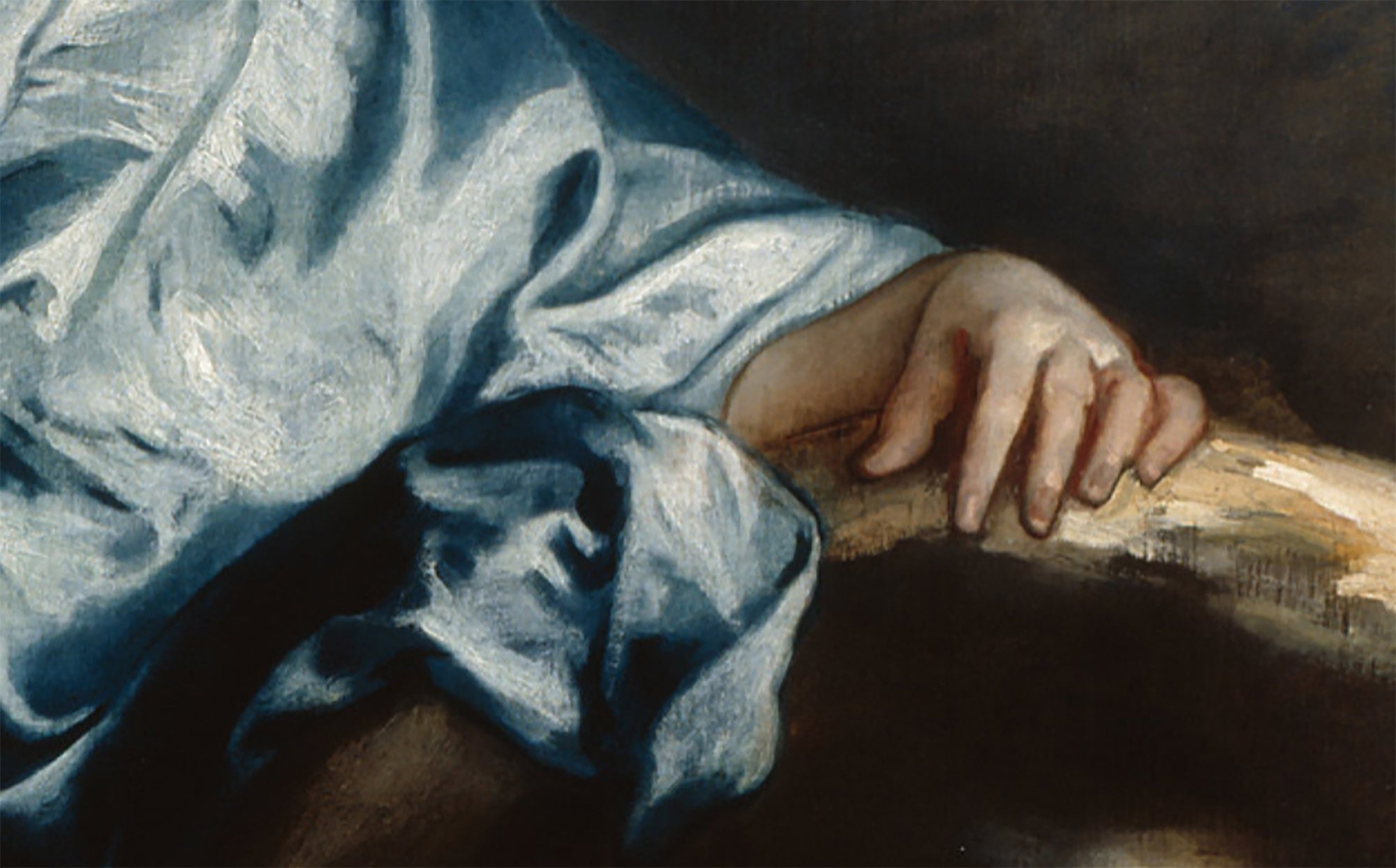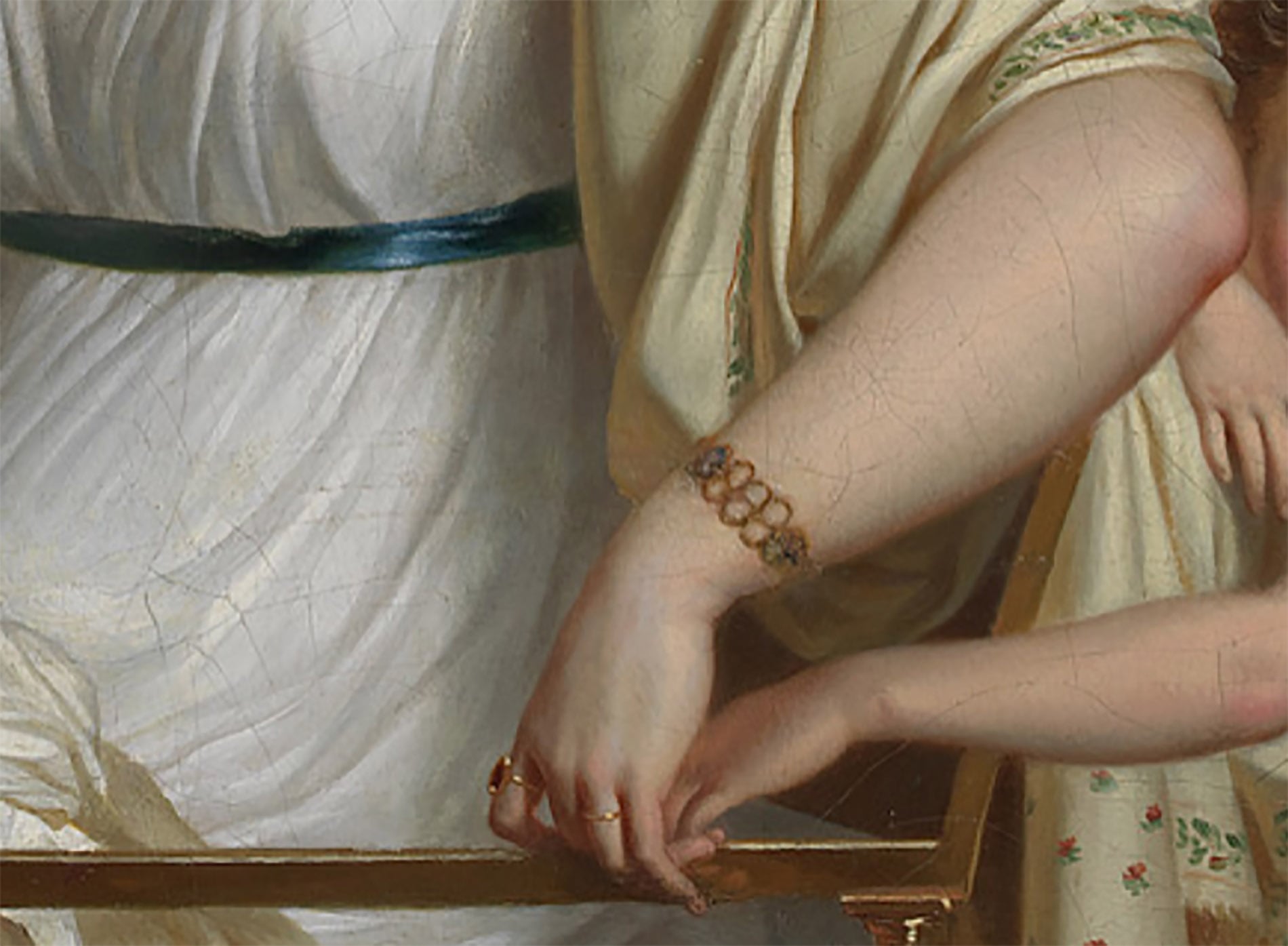

My left hand hangs down, weighted by a gold wedding band. My palm cups a circular space. Intruding into this space, a child’s fingers poke at my fingertips. My right hand grasps firmly at a fat baby’s waist. The baby reaches towards a man, but I lean away from him, offering my feet on a raised pedestal. I lean instead towards the child, not really in interest, but in laziness — leaning into the chair upon which I rest. The chair itself is delicate, upholstered in rich blues and reds. My dress is for leaning in, a uniform of inclination, an inclination towards marbled surfaces. Beyond anything I am inclined towards a horizontal plane, holding myself sloping away from all that is erect, upstanding. To lie down would be too excessive — I only suggest I do not wish to exist in parallel to those that are upright.1
You paint a very enticing picture. I’ve noticed you have a tendency towards image-making. This might lead to conflict, butting heads. We can both be quite stubborn and I tend to rest heavily on indistinct forms. Like a crystal ball that tells neither fortune nor future. Instead, disrupting temporalities and trajectories, this orb spreads out in every direction. In writing this I want to lean in, to whisper something into the orb, to watch the smoky clouds part slightly as my breath sweeps through. But to whisper what? I’m not sure. I might lean on the orb and tap my fingers, waiting, trying to think of what to say.
Part of the challenge of communicating through, and to, another is a navigation of languages and starting points. Where you see a space of open potential, I am drawn to a rendering of a place. I am fighting the urge to say ‘speak louder’. This is both a challenge and a formative dialectic. How else could two countesses communicate across the boundaried space of paintings, across a suggested connection via a rhythmic pattern of touching hands?
You mentioned grounding, and as I write this I’m waiting to fly. I’ll be sitting in clouds, with my only my feet touching a solid mass. An ossified formation, knobbly and hollowed out over time. You talk about marble and perfection, but all I can see is this bumpy, bally thing, resting precariously beneath me. I suppose it’s waiting to metamorphose, in a way, waiting to transform from a smelly damp death into something that we might be able to work with. I’m suddenly very aware of not pressing too hard. This thing is brittle and I think I could squash it easily with the weight of my feet. It’s like a second orb, but an empty one. What are your thoughts?
In this instance, what I see hangs above me and depicts a similarly clouded and buoyant celestial space as you seem to describe. Where you look down, towards the absence-of-body, I look up, towards an interior orb that contains me. Where you want to fly, I stay stolidly seated, leaning even further towards the horizontal. My lean presents an incline away from strategy and wisdom, towards the assassination of dictatorships.2
Your leaning away and towards seems, to me, unnecessarily dichotomous. Can we think about wisdom as a gathering of clouds? A thickening? A slowly developed opacity, inclined towards a disruption of power structures?
Last night I dreamt about our communications. In my dream I was anxious to write to you. I sat in a room trying to write as you walked past the windows. I called out to you but you couldn’t hear me as you had headphones in. I looked down and there were torn bits of paper strewn over the beige carpet, gathering under the couch and the chairs. It had grown soft and delicate with age. I felt as though this were my fault. I started crawling around on the floor trying to pick up all the bits of paper. I thought about what I would write in the morning. You walked past the window. I picked up more scraps of paper.
There’s a tiny detail in your this communication that has made me uneasy. You say I was walking and wearing headphones. I’m not sure if you’ve noticed and perhaps it has never come up before, but I rarely use headphones and definitely never walk with them in. So it’s strange that in your dream I was wearing headphones. For this reason, it seems like who you saw wasn’t really me. They were a stand-in, an imposter — a poor one at that. I’m glad they didn’t respond to your calls, imagine if they had. Think about what you might have told them, what insecurities you might have given away.
This imposter, I’m glad I didn’t tell them anything, glad the event finished with notes scattered. What could I have handed over? Headphones clearly demarcate a singular, private, sonic space — through headphones, direct aural communication is not possible. The headphones were a diversion to throw us off our task.
Looking down at this bony crust, I’m realising that this isn’t a crystal clear knowing, it’s a milky-ness, a sludge that finds its way into crevices and nooks. This thing feels slippery and I’m leaning into your prompt to yell.
Perhaps this space of looking down and looking up, or of flying and remaining seated, can position our communication. If we are to start from our relation as a beginning, establishing our communication, we can see this relation as being the essential state, which calls into question our being vulnerable. Vulnerable towards a sensed inclination, vulnerable to slanting and falling, the vulnerability of not being upright, or the vulnerability of revealing secrets. We are consigned to one- another not just in the communicative relation but in the ontological necessity of painting.
I keep hearing announcements, beeping and air moving rapidly above me. I’ve got to jet.
Between up and down is the trajectory of rising and falling. If we are to take this relation radically, it does not allow for equality but is determined by a continuous weaving together and interdependence. Or, unbalance. How do we lean together, unbalanced? Between the vertical and the horizontal is a fall. A fall into what? Could this relation be crystallised as a line? Is a line a distinction, or a connection between? Or, mathematically, a relation. The straight vertical or horizontal line maps one variant on a fixed plane, yet a line that slopes maps two variables in relation to one another. Dancing in relation, we produce a slanted line and lean into it. Or, slip down it.
Could you hand that paper to me? And could I move the pieces between my hands and across my lap? I can picture fragments of a scratchy scrawl on crinkled parchment. As I hold each piece, the small amount of moisture in my fingertips catches on the sheet and tears it more. If I try hard and focus my attention, I can make out certain words that you’ve written. I get the sense that you wrote these notes to be read by another. Every lowercase letter is curved neatly towards the next. You don’t loop, or join. That’s not your style. But the efficiency of the letters, the clarity of the words in relation to one another, makes me feel like you’re writing to me. It’s not the jumbled mess of a note-to-self, it’s the well-articulated shapes of a note-to-collaborator. In my excitement at receiving your communication I fumble, dropping the shards of paper from my lap. They slide off, as I slump back, trying to rearrange my blue dress in a way that might corral them mid-fall. I wonder if we should return to a rhythmic pattern of touching hands, a linking of bodies and actions.
It makes me feel anxious, to have my words reassembled and coherent again. The paper is in pieces next to me, but perhaps you could restore them as a new form. It’s not so much the paper vibrating but me. I need to sit down, to wrap my dress around me again. Come back to how these gestures to others may communicate more than the words I struggle with. I feel we are still leaning into this communication without a sense of what we lean towards. Through leaning towards we occupy a space of not quite. Rather than knowing what deal the handshake seals, this motion becomes a rhythmic pattern of touching hands.
Jacqui Shelton is a Melbourne based artist and PhD candidate at the Monash University School of Art, Design and Architecture.
Therese Keogh is an artist, living and practicing in Sydney.
